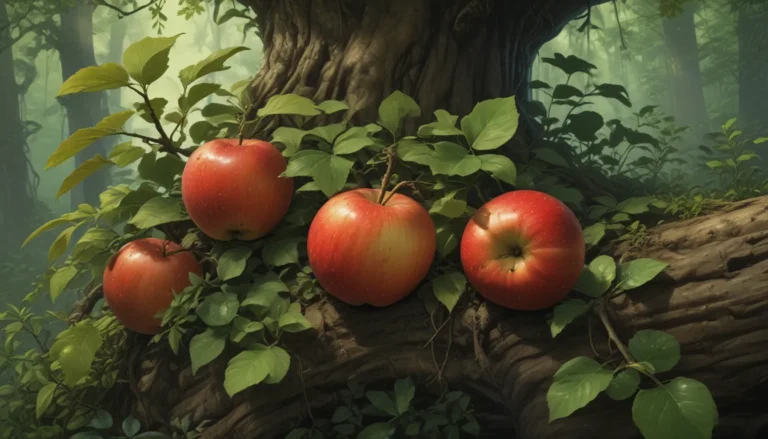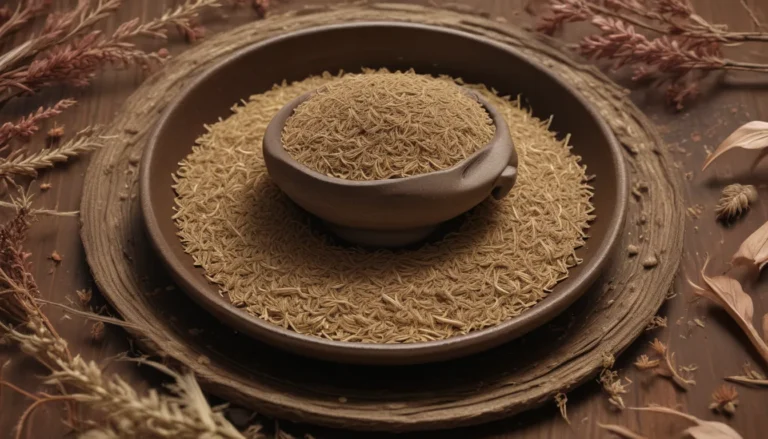The Ultimate Guide to Growing Delicious Fig Trees

Figs are truly a remarkable fruit, with a rich history and unique characteristics that make them stand out in the garden. From their beautiful leaves to their sweet, syrupy fruits, fig trees are a wonderful addition to any garden.
In this comprehensive guide, we will explore everything you need to know to grow your own beautiful and productive fig trees. From cultivation to harvesting, pruning to preserving, we will cover it all.
So grab your gardening gloves and get ready to dive into the world of fig trees!
What You’ll Learn
- Cultivation and History
- Propagation
- How to Grow
- Growing Tips
- Pruning and Maintenance
- Cultivars to Select
- Managing Pests and Disease
- Harvesting
- Preserving
- Recipes and Cooking Ideas
- Quick Reference Growing Guide
Are you ready to join the ranks of fig enthusiasts and start growing your own delicious fruits? Let’s get started!
Cultivation and History
Figs have a rich history, dating back thousands of years to ancient civilizations in the Middle East and northwestern Asia. They were prized for their food, wine, and medicinal properties, and have since spread to all corners of the globe.
Today, figs are cultivated commercially in countries like Turkey, Egypt, and Spain. They are part of the Moraceae family, which also includes mulberries.
Figs are relatively easy to grow, thriving in USDA Hardiness Zones 8 to 10. For colder regions, container growing is an option, allowing gardeners to bring the trees indoors during the winter.
Some cold-hardy fig varieties can even survive down to Zone 6 with proper protection. These fast-growing trees can reach up to 30 feet tall and produce two crops a year under the right conditions.
The fruits themselves come in a variety of shapes, sizes, and colors, making them a unique addition to any garden.
Fig Tree Propagation
While growing figs from seeds is possible, it’s a time-consuming and unreliable process. Instead, propagating fig trees from cuttings is a simple and effective method.
To propagate from cuttings, take an 8- to 10-inch cutting of young growth in early spring. Plant the cutting in a pot with well-draining soil, keeping it moist and in a sunny spot.
Rooting hormone can be used to speed up the process, but figs are known for their ability to root easily on their own.
Transplant the cutting the following spring once it has established roots. This method is a great way to recreate a plant you love or try out new fig varieties.
How to Grow Fig Trees
Fig trees are sun lovers, requiring 7-8 hours of full sun to thrive. While they are drought-tolerant, regular watering is essential for healthy growth and fruit production.
Soil should be well-draining loam with a pH of 6.0 to 7.5. While figs don’t require frequent fertilizing, a balanced fertilizer can be used to jumpstart growth if needed.
Pruning fig trees is minimal, focusing on removing dead or ill-placed branches. Regular maintenance helps maximize light exposure and air circulation, promoting healthy growth.
Fig Tree Cultivars to Select
When it comes to fig tree varieties, the common fig is the most popular choice for home gardeners. Some well-known cultivars include ‘Black Mission,’ ‘Brown Turkey,’ ‘Celeste,’ ‘Desert King,’ and ‘Hardy Chicago.’
Each variety has its unique characteristics, from cold hardiness to fruit size and flavor. Choosing the right cultivar for your garden will ensure a successful harvest year after year.
Managing Pests and Disease
While fig trees are relatively low-maintenance, they can be susceptible to pests and diseases. Common herbivores like birds and squirrels can be a challenge, especially during harvest time.
Insects such as fig scale and root-knot nematodes can also pose a threat to fig trees. Proper monitoring and early treatment are key to managing these issues and ensuring a healthy tree.
Diseases like Botrytis blight and fig mosaic can impact fig trees, but preventive measures like pruning and sanitation can help minimize their impact.
Harvesting Fig Fruit
Knowing when to harvest figs is crucial for enjoying ripe, delicious fruit. Figs go through several stages of growth before ripening, so timing is key.
Ripe figs will be soft to the touch and may show signs of splitting or darkening in color. Harvesting at the right time ensures the best flavor and quality.
Preserving Fig Fruit
To extend the shelf life of harvested figs, consider drying or preserving them. Dried figs can be stored in the refrigerator or freezer for up to 24 months, providing a tasty treat year-round.
Recipes and Cooking Ideas
Beyond eating fresh figs, there are countless ways to enjoy them in recipes and dishes. From popsicles to salads to jams, figs add a sweet and unique flavor to any meal.
Exploring different cooking ideas and recipes can help you make the most of your fig harvest and enjoy these delectable fruits in new and exciting ways.
Quick Reference Growing Guide
For a quick overview of fig tree cultivation, our handy reference guide provides key information on planting, maintenance, and care. Use this guide as a quick reference tool to help you grow healthy and productive fig trees in your garden.
By following these tips and guidelines, you can cultivate beautiful and productive fig trees in your own backyard. Whether you’re a seasoned gardener or a beginner, growing figs is a rewarding experience that will provide you with delicious fruit for years to come.
So roll up your sleeves, dig in the dirt, and start growing your own beautiful and productive fig trees today!





